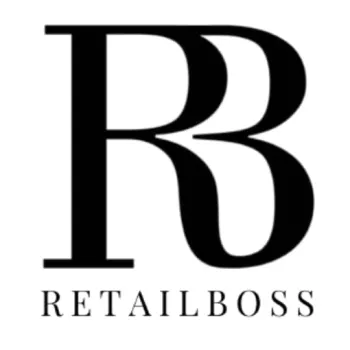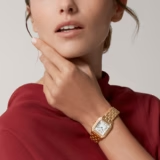According to a recent survey conducted in 2025, watches and jewelry have emerged as the most coveted second-hand luxury items among China’s millionaires, with approximately 30 percent of wealthy respondents reporting regular purchases in this category. Handbags and accessories are the second most purchased type of pre-owned luxury goods among the nation’s affluent consumers.
Elite Consumer Preferences Reshape China’s Second-hand Luxury Market
The comprehensive survey, which included 750 high-net-worth individuals with personal assets exceeding ten million yuan (approximately $1.4 million USD), provides valuable insights into the consumption patterns of China’s wealthiest consumers. Respondents were predominantly young, with an average age of 35 years, equally split between genders, and overwhelmingly married (91 percent). Nearly half (45 percent) resided in tier-1 cities, with the remainder distributed across new tier-1 and tier-2 urban centers.
This trend among millionaires reflects a broader shift in China’s luxury consumption landscape, which has undergone significant transformation in recent years. The wealthy’s preference for pre-owned watches and jewelry comes at a time when the overall luxury market in China faces substantial headwinds. It experienced an 18-20 percent year-on-year decline in 2024, reverting to 2020 levels.
“The downturn is primarily driven by lukewarm consumer confidence driven by economic uncertainty and a decline in real estate value, a shift in spending toward overseas markets, and a reluctance to accept frequent price increases by brands without well-justified value propositions,” explained Bruno Lannes, a Greater China-based senior partner at Bain & Company.
The Growing Second-hand Luxury Ecosystem
Despite the broader luxury market’s challenges, China’s second-hand luxury sector continues flourishing. From a modest USD 8 billion market in 2020, it has expanded dramatically and is projected to reach USD 32 billion by 2025, representing a nearly fourfold increase in five years.
This growth is driven by affluent consumers and younger generations, with millennials and Gen Z constituting over 80 percent of the second-hand luxury market. These consumers are increasingly drawn to pre-owned luxury items for various reasons, including affordability, sustainability concerns, and the desire for unique products.
“It’s more than just a trend; it’s a transformation of the way luxury is perceived, acquired, and treasured,” notes industry expert commentary from eTOC GmbH. “As the Chinese second-hand luxury market cultivates its ground, it’s not merely an economic shift but a redefining of cultural values towards mindful consumption and heritage appreciation.”
Economic Factors Influencing the Resale Market
The rising popularity of second-hand luxury goods among China’s millionaires coincides with broader economic pressures affecting the country. China’s retail sales grew by only 3.2 percent in September 2024, reflecting subdued consumer sentiment.
This shift toward the second-hand market presents additional challenges for luxury brands. The gray market for luxury goods in China is estimated at $57 billion annually, fueled by platforms like DeWu, where luxury products sourced overseas are sold at discounts ranging from 20 percent to over 50 percent compared to prices at Chinese flagship stores.
“The number of sellers is growing fast, and most of them are selling luxury items for the first time. But for the buyer’s side, it’s pretty steady,” said Zhu Tainiqi, founder of second-hand luxury goods marketplace ZZER, noting that while selling activity has increased, purchase prices have declined from the previous year, with average order values falling approximately 10 percent.
Product Category Dynamics
While watches and jewelry dominate preferences among millionaires, the broader second-hand luxury market shows different patterns. In the first half of 2022, suitcases, bags, and leather goods constituted nearly 59 percent of China’s second-hand luxury goods sales, a slight increase from the previous year. However, the share of second-hand luxury watches increased significantly during this period, foreshadowing the current preference among millionaires for this category.
The shift toward watches and jewelry among the wealthy may represent a strategic investment approach, as these items are often perceived as value-preserving assets during economic uncertainty—though ironically, Bain & Company reports that jewelry and watches faced the most significant challenges in the primary luxury market in 2024.
Looking Ahead: Market Stability in 2025
As China approaches 2025, the luxury goods market is expected to stabilize after the significant downturn in 2024. Bain & Company forecasts a “challenging H1 and improving H2” that should result in an overall flat trend for the year.
This cautious outlook comes as the Chinese government implements stimulus measures to boost consumption. Last autumn, the Chinese central bank announced the country’s most significant stimulus plan since the pandemic, injecting $150 billion and cutting several interest rates to revive economic growth and consumer spending.
For wealthy consumers, the appeal of second-hand luxury appears poised to continue, with watches and jewelry maintaining their position as the preferred categories. This trend aligns with a 2022 survey that found approximately 48 percent of Chinese millionaires planned to increase their consumption of luxury goods over the subsequent three years.
As China’s luxury landscape evolves, the second-hand market is increasingly positioning itself as a key channel for affluent consumers seeking value and uniqueness and younger generations exploring luxury ownership through more accessible means.

















